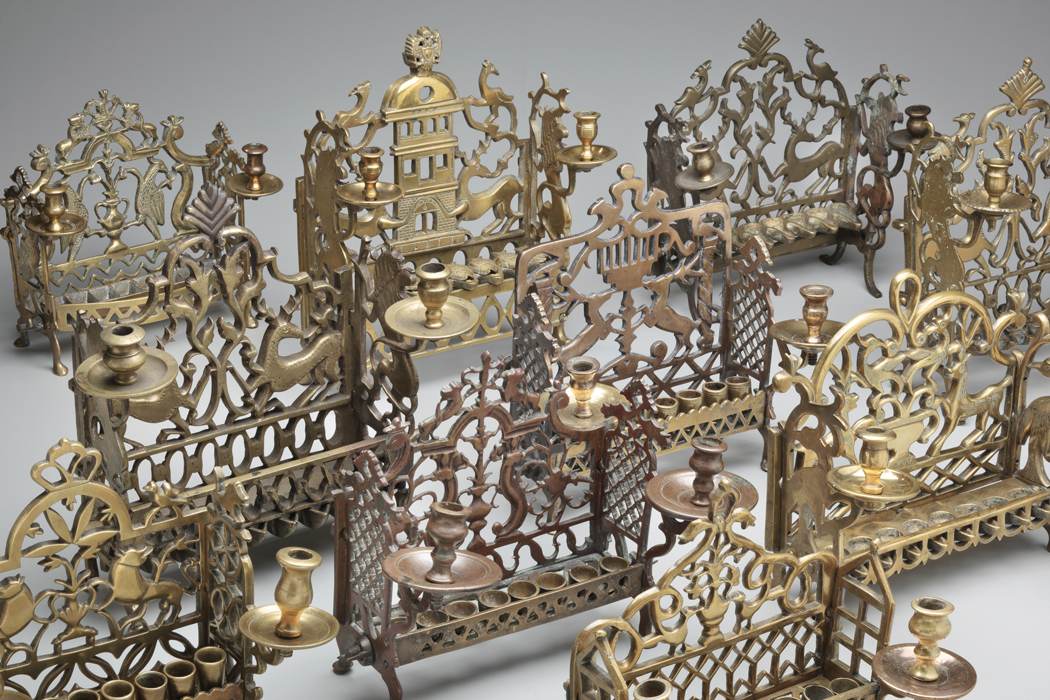| We generally think the term “biography" can only describe the life of a person. In fact, it can describe objects too (as Igor Kopytoff’s explains in his famous article, “The Cultural Biography of Things”). We might ask, for example: Where did an object come from? Who made it? How has its use changed with age? |
We can ask similar questions about a collection (Who created the collection? Why? What purpose was the collection meant to serve? And how has its purpose or usefulness changed with age?)
Upon whom does the responsibility fall to properly keep and transmit such information (if anyone)? In class, we did not come up with a good answer!
THE “IDEAL CAREER” OF A COLLECTION
We also followed the life story of the Horwitz collection (the bulk of which was transferred to the B’nai Brith museum in Washington DC, was later put into storage, and was finally transferred to the Skirball Museum in Cincinnati). We found this life story to fall short of the “ideal career” for such a collection.
These are the qualities of a collection's “ideal career”:
END OF LIFE FOR A RITUAL OBJECT
THE “IDEAL CAREER” OF A COLLECTION
We also followed the life story of the Horwitz collection (the bulk of which was transferred to the B’nai Brith museum in Washington DC, was later put into storage, and was finally transferred to the Skirball Museum in Cincinnati). We found this life story to fall short of the “ideal career” for such a collection.
These are the qualities of a collection's “ideal career”:
- It remains in tact
- It is made accessible to a broad public and to scholars
- It is cared for to insure its longevity
- It is properly catalogued (with information including the objects’ provenance)
- It is used to tell a compelling narrative, designed to educate
- It is widely viewed and engaged with
END OF LIFE FOR A RITUAL OBJECT
In our discussions about the various pieces in the Horwitz collection, we reached a dead-end when it came to the question: What is the ideal life-span for a Jewish ritual object? How should the end of its life be determined? And what should happen to it once it reaches the end of its life?
Indeed there is cultural discomfort around disposing of Jewish ritual items (or dismantling a collection, a library, a set of synagogue possessions). When such scattering and disposal does occur, it is often with little fanfare, and without acknowledgement or reflection on what the object’s end-of-life signifies.
TORAH SCROLL
The Torah Scroll is particularly interesting because it is one of the few Jewish ritual objects about which there are detailed prescriptions for how its “biography” ought to unfold. Rules lay out how a Torah Scroll should be crafted, and how it should be treated during its lifetime. So, too, there are rules to determine when a Torah Scroll has reached the end of its life and how it should be disposed of.
The new phenomena of “Holocaust Torahs” overrides these guidelines, raising ethical and spiritual questions about the purpose of Torah Scrolls and how they ought to be treated. We will address this during the first half hour of our upcoming class
Indeed there is cultural discomfort around disposing of Jewish ritual items (or dismantling a collection, a library, a set of synagogue possessions). When such scattering and disposal does occur, it is often with little fanfare, and without acknowledgement or reflection on what the object’s end-of-life signifies.
TORAH SCROLL
The Torah Scroll is particularly interesting because it is one of the few Jewish ritual objects about which there are detailed prescriptions for how its “biography” ought to unfold. Rules lay out how a Torah Scroll should be crafted, and how it should be treated during its lifetime. So, too, there are rules to determine when a Torah Scroll has reached the end of its life and how it should be disposed of.
The new phenomena of “Holocaust Torahs” overrides these guidelines, raising ethical and spiritual questions about the purpose of Torah Scrolls and how they ought to be treated. We will address this during the first half hour of our upcoming class
| STAINED GLASS WINDOWS We will then switch gears to discuss another sort of Jewish object: stained glass windows used in synagogue buildings. For an overview of how these are viewed in American Jewish settings see here We will also touch on a case-study: which tells the life-story of windows in a synagogue in Mahanoy City, a Pennsylvania coal mining town. |
This story, found here, focuses on the how the windows’ biography unfolded once the congregation that owned them shrunk, and finally ceased to operate.
This very interesting piece helps to tease out the different ways of valuing stained glass windows. In some ways they are simply commodities. In other ways, they represent the soul of a building (and perhaps the soul of the congregation itself).
This very interesting piece helps to tease out the different ways of valuing stained glass windows. In some ways they are simply commodities. In other ways, they represent the soul of a building (and perhaps the soul of the congregation itself).




 RSS Feed
RSS Feed
